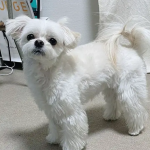When Can Puppies Safely Have Their Nails Clipped? Discover Expert Tips & Schedule An Appointment Now!
When Can Puppies Have Their Nails Clipped?
Greetings, Puppies Lover! As a dog owner, it is essential to ensure the overall well-being and grooming of your furry companion. One aspect of grooming that often gets overlooked is nail clipping. Knowing when puppies can have their nails clipped is crucial to their comfort and health. In this article, we will provide you with all the necessary information on this topic, so you can keep your pup’s nails in tip-top shape.
Table of Contents
Introduction
Overview
What
Who
When
Where
Why
How
Advantages
Disadvantages
FAQ
Conclusion
Final Remarks
1 Picture Gallery: When Can Puppies Safely Have Their Nails Clipped? Discover Expert Tips & Schedule An Appointment Now!

Introduction
When it comes to grooming your puppy, keeping their nails trimmed is an important part of maintaining their overall health and well-being. Long and untrimmed nails can cause discomfort, pain, and even lead to health issues. However, it is crucial to know when it is safe to start clipping your puppy’s nails to avoid any mishaps or injuries. In this introduction, we will explore seven key aspects of when puppies can have their nails clipped.

Image Source: fearfreehappyhomes.com
1. Age: Puppies’ nails can be clipped as early as two weeks old, but it is recommended to wait until they are at least three to four weeks old. At this age, their nails are still soft and easy to trim without causing any harm.
2. Size: The size of your puppy also plays a role in determining when they can have their nails clipped. Smaller breeds tend to have softer nails, so you may be able to start clipping them earlier compared to larger breeds.
3. Behavior: It is important to observe your puppy’s behavior before attempting to clip their nails. If they are comfortable being handled and show no signs of fear or aggression, it is a good indication that they are ready for a nail clipping session.
4. Exposure: Gradually exposing your puppy to the sight and sound of nail clippers from an early age can help them become more comfortable with the process. This exposure will make it easier for you to clip their nails when the time comes.
5. Technical Skills: Nail clipping requires some technical skills to ensure a safe and accurate cut. If you are unsure or uncomfortable with the process, it is advisable to seek assistance from a professional groomer or veterinarian.
6. Nail Length: Once your puppy’s nails start to touch the ground while they are standing, it is an indication that they need a trim. Waiting too long may result in overgrown nails, which can cause pain and discomfort when walking or running.
7. Regular Maintenance: Once you start clipping your puppy’s nails, it is essential to maintain a regular schedule. Trimming their nails once a month is usually sufficient, but some dogs may require more frequent trims depending on their activity level and nail growth rate.
Overview
In this article, we will delve deeper into various aspects of when puppies can have their nails clipped. We will explore what nail clipping entails, who should be responsible for the task, when it is safe to start, where to carry out the nail clipping process, why it is important, and how to effectively trim your puppy’s nails. Additionally, we will discuss the advantages and disadvantages of nail clipping and address common questions in our FAQ section. Finally, we will conclude with some encouraging remarks and a disclaimer. So, let’s dive in!
What is Nail Clipping?
Nail clipping is the process of trimming a dog’s nails to maintain an optimal length. It involves using specially designed nail clippers to carefully remove the excess nail material without causing any harm to the dog’s quick, which is the sensitive part of the nail that contains nerves and blood vessels. Proper nail clipping ensures that your puppy’s nails do not become overgrown, preventing discomfort and potential health issues.
Who Should Clip the Nails?
The responsibility of clipping a puppy’s nails falls on the owner or caregiver. As a dog lover, it is important to be actively involved in your pet’s grooming routine, including nail maintenance. However, if you are unsure or uncomfortable with the process, it is advisable to seek assistance from a professional groomer or veterinarian who has experience in nail clipping.
When Can You Start Clipping?
The ideal time to start clipping your puppy’s nails is when they are between three to four weeks old. At this age, their nails have hardened slightly, but are still relatively soft and easy to trim. It is important to introduce nail clipping gradually and positively to help your puppy become comfortable with the process.
Where Should Nail Clipping Occur?
Nail clipping can be done in a quiet and comfortable area of your home. Choose a well-lit space where you and your puppy feel at ease. Prepare a non-slip surface, such as a rubber mat, to ensure stability during the process. You may also consider having treats nearby to reward your puppy for their cooperation.
Why is Nail Clipping Important?
Nail clipping is important for several reasons. Firstly, long and untrimmed nails can cause discomfort and pain for your puppy. They may experience difficulty walking, running, or even standing properly. Secondly, overgrown nails can curl and grow into the paw pads, leading to infections and injuries. Lastly, regular nail clipping prevents accidental scratches and damage to furniture, flooring, and family members.
How to Clip Your Puppy’s Nails?
To effectively clip your puppy’s nails, follow these steps:
1. Familiarize: Gradually introduce your puppy to the sight and sound of the nail clippers. Let them sniff and investigate the clippers before proceeding.
2. Prepare: Gather all necessary supplies, including nail clippers suitable for puppies, treats, and styptic powder (in case of accidents).
3. Position: Hold your puppy’s paw gently but firmly. Be cautious not to squeeze too tightly to avoid causing discomfort.
4. Observe: Identify the quick of the nail, which appears as a pinkish area. Carefully position the clippers a safe distance away from the quick to avoid cutting it.
5. Clip: Make a smooth and quick cut at a 45-degree angle. Take small sections off the nail to avoid cutting too much at once.
6. Reward: Praise and reward your puppy with treats and gentle words after each successful nail clipping session. This positive reinforcement will create a pleasant association with the process.
Advantages of Nail Clipping
1. Comfort: Regular nail clipping ensures that your puppy is comfortable while walking, running, and playing.
2. Hygiene: Keeping your puppy’s nails trimmed helps maintain proper hygiene by preventing dirt and debris from getting trapped.
3. Health: Overgrown nails can lead to painful conditions like nail bed infections or curling into the paw pads, which can be avoided through regular clipping.
4. Safety: Clipping your puppy’s nails reduces the risk of accidental scratches or damage to furniture, flooring, and family members.
5. Bonding: The process of nail clipping provides an opportunity for bonding and trust-building between you and your puppy.
Disadvantages of Nail Clipping
1. Quick Injury: Accidental cutting of the quick can cause bleeding and pain. This can be avoided with careful handling and using proper techniques.
2. Stressful for Some Puppies: Some puppies may find the nail clipping process stressful or uncomfortable. Patience and positive reinforcement can help alleviate their anxiety.
3. Technical Skill Required: Nail clipping requires some level of technical skill to ensure a safe and accurate cut. If you are unsure, it is best to seek professional help.
4. Over-Reaction: Puppies may have a tendency to react strongly to nail clipping, including squirming, yelping, or pulling away. Patience and gradual acclimatization can help reduce their reactions over time.
5. Frequency: Maintaining a regular nail clipping schedule can be challenging for some owners, especially if their puppy’s nails grow quickly. Consistency is key to prevent overgrown nails.
Frequently Asked Questions
1. Can I use human nail clippers to trim my puppy’s nails? It is not recommended to use human nail clippers as they are not designed for pet nails. Use specialized nail clippers suitable for puppies.
2. How often should I clip my puppy’s nails? It is generally recommended to clip your puppy’s nails once a month. However, some dogs may require more frequent trims based on their nail growth rate and activity level.
3. What should I do if I accidentally cut the quick? Accidental cutting of the quick can cause bleeding. Apply styptic powder or cornstarch to the nail to help stop the bleeding. If bleeding persists, seek veterinary assistance.
4. Can I file my puppy’s nails instead of clipping them? While filing can be an alternative, it is often more time-consuming and may not be as effective in maintaining optimal nail length compared to clipping.
5. Can I start clipping my puppy’s nails at home? Yes, you can start clipping your puppy’s nails at home. However, if you are unsure or uncomfortable with the process, consider seeking assistance from a professional groomer or veterinarian.
Conclusion
In conclusion, knowing when puppies can have their nails clipped is crucial for their comfort, health, and overall well-being. By following the guidelines mentioned in this article, you can ensure that the nail clipping process is safe, positive, and stress-free for both you and your furry companion. Remember to start early, maintain a regular schedule, and seek assistance when needed. With proper care, your puppy’s paws will remain happy and healthy!
Final Remarks
Disclaimer: The information provided in this article is for educational purposes only and should not replace professional veterinary advice. If you have any concerns or questions regarding your puppy’s nail care, consult with a qualified veterinarian or professional groomer. The responsibility for the health and well-being of your pet lies with you as the owner or caregiver.
This post topic: Puppies


